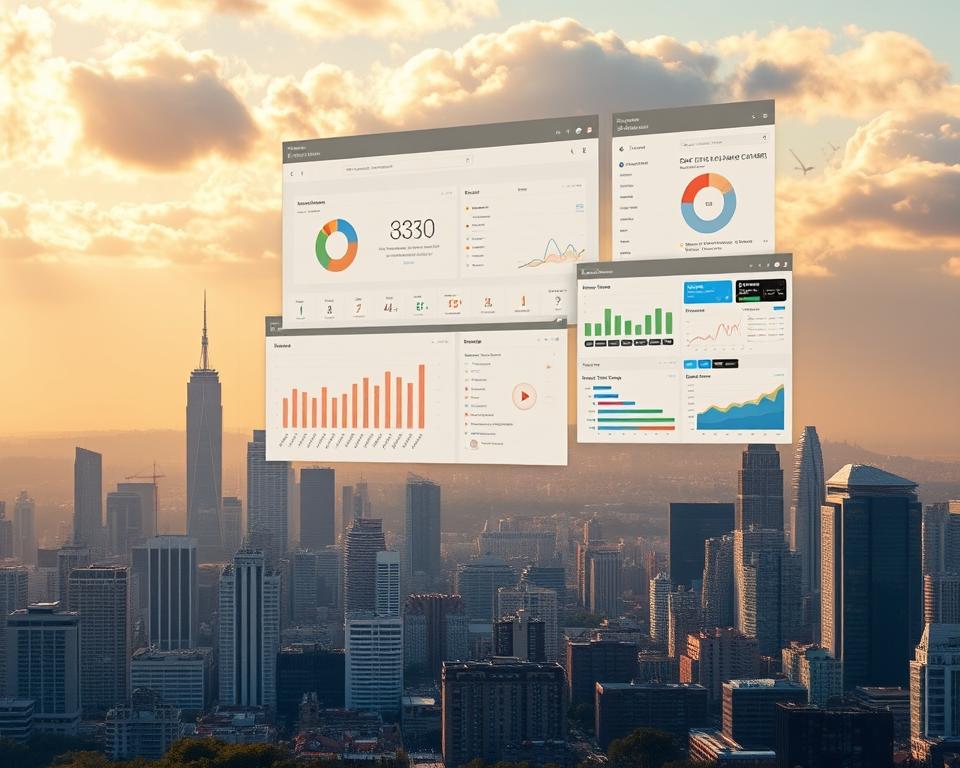What Is Technical SEO? An Starter’s Guide
Have you ever wondered why certain sites top search engine results whereas others are hard to find? The secret often lies in technical search engine optimization. This essential strategy optimizes a website’s setup, making it simpler for search engines to find and index its content. In this guide, we’ll explore the concept of technical SEO, explaining its importance and how understanding its fundamentals can enhance your site’s visibility and user satisfaction.
Technical Search Engine Optimization covers a range of tactics, such as utilizing a robots.txt document to manage search engine access up to refining internal link structures. This introduction is intended to simplify these concepts for those new to the field. It presents implementable suggestions to enhance the performance of your site.
Essential Insights
- Technical SEO enhances the structure of a site for better search engine crawling and indexing.
- The robots.txt file enables management of how search engines access your site.
- Google Search Console is a vital tool for tracking the crawling behavior of Google.
- Page speed and mobile compatibility are critical for ranking because of Google’s prioritization of mobile indexing.
- Utilizing schema.org markup improves how search engines interpret your page content.
- Resolving problems such as broken links and redundant content is vital for sustaining SEO efficacy.
Comprehending Technical SEO
Technical SEO is about the way search engines interact with your website. It concentrates on making your site crawlable, understandable, and understandable. Knowing the basics of technical SEO is vital for boosting your website’s search performance.
The role of technical SEO in your website’s success is extremely important. It deals with crawlability, performance, and indexation. Proper technical SEO ensures search engines can find and understand your content. This results in enhanced user satisfaction and improved natural search rankings. You can learn about domain appraisal domain valuation services
Important elements in technical SEO are:
- Crawlability: Crawling budget, use of JavaScript, and the architecture of the site are crucial. It’s important for search engines to crawl your site efficiently.
- Site Speed: Focus on site speed, reducing code, and adopting responsive layouts. This improves user experience across all devices.
- Indexing: Handling XML sitemaps, resolving duplicate content, and monitoring log files are essential tactics.
A properly organized website is vital for big sites. A flat site architecture facilitates search engines to crawl every page. Consistent and logical URL structures help users and Google understand your site’s layout.
Breadcrumb navigation enhances site architecture by incorporating internal linking. It aids in navigation and user experience. Detecting and resolving crawl issues is crucial for accurate indexing. Tools like Google Search Console Coverage Report and SEMrush Site Audit help in this process.
| SEO Component | Details | Importance |
|---|---|---|
| Crawl Capability | Ability of search engines to access and navigate your site | Ensures search engines can index your content effectively |
| Site Speed | Optimization of site speed and responsiveness | Boosts user satisfaction and keeps visitors engaged |
| Indexation | Process of a search engine adding your site’s pages to its index | Essential for visibility in search engine results |
Grasping technical SEO enhances your website’s visibility and user experience. As online marketing progresses, a strong technical SEO strategy is vital for success.
Explaining Technical SEO
For individuals seeking to boost their site’s performance in search engines, grasping technical SEO is crucial. It concentrates on enhancing the technical elements of a site, not just its content. The aim is to facilitate search engine crawlers to find, crawl, and index pages. This yields better visibility in search results and a more satisfying user experience.
Explaining the Definition and Purpose of Technical SEO
Technical SEO includes methods to boost a site’s infrastructure. It includes enhancing loading times, guaranteeing mobile compatibility, and improving security. For instance, 53% of mobile users leave if a page doesn’t load in three seconds. Quick-loading websites improve user satisfaction and conversion metrics, with a 0.3% drop in ecommerce conversions for every second delay.
By focusing on these areas, a site can ascend search engine rankings. This is key to drawing in more traffic and boosting engagement.
The Mechanics of Technical SEO
Technical SEO entails various tactics aimed at essential aspects. Optimizing site structure is crucial. A well-organized layout and internal links aid search engines in indexing content more effectively. XML sitemap files also are important by enumerating all significant URLs.
Site security is another vital factor, with HTTPS-protected sites achieving higher rankings due to Google’s preference. Structured data qualifies a site for enhanced search results, boosting exposure and CTR.
Mobile compatibility is vital, as 60% of users access websites on mobile devices. A responsive design provides a seamless experience across various devices, lowering bounce rates. Ongoing maintenance is also essential to address issues like dead links, which can harm navigation and search visibility.
Comprehending technical SEO is fundamental for a site’s success and user engagement.
The Significance of Technical SEO
Grasping technical SEO reveals how to establish a robust online presence. It involves enhancing the structure and backend of a site. This boosts its visibility in search engine results. Maintaining technical integrity of a site requires ongoing effort and attention on several factors.
Impact on Search Visibility
Technical Search Engine Optimization is crucial to a site’s crawl capability and indexing by search engine crawlers. Without proper access or understanding, visibility drops significantly. Experts address problems such as meta tags, dead links, and website architecture to boost indexing. Resources such as XML sitemaps aid search engines in discovering and indexing new pages effectively.
User Experience and Page Speed
Loading speed is vital for user happiness. Sites that load in more than two seconds see a sharp rise in bounce rates. This negatively impacts user engagement and possible revenue. With mobile traffic over half of all internet use, optimizing for mobile is crucial. A quick-loading website keeps visitors engaged and signals to search engines that it’s user-friendly, boosting its SEO value.
Crawling and Indexing Demystified
Crawling and indexing are essential aspects of technical SEO, affecting your site’s visibility within search engine outcomes. The crawling process is the process by which search engines find web pages. Google’s web crawler, the Google crawler, follows links and fetches content from different websites. It systematically explores the web, recording URLs for later analysis.
After crawling occurs, indexing begins. Google examines the content, images, and videos on the page. It saves this data in a huge database called Caffeine. This guarantees that when users search, Google can quickly find relevant pages, improving user experience. Indexed pages are then assessed based on numerous ranking criteria, such as location and device.
Site owners have a significant role in enhancing crawling and indexing. By fine-tuning robots.txt files, they can manage which sections of a site search engines can access. Managing crawl budgets is also essential, making sure key pages are given priority. Well-structured URLs, descriptive anchor text, and XML sitemaps also aid in better indexing.
Neglecting these technical SEO fundamentals can lead to lost ranking chances. For instance, a 404 not found status code prevents a page from being indexed, lowering visibility. Strategies that improve site architecture, internal linking, and content quality can greatly enhance crawling and indexing. This, in turn, impacts search visibility and drives organic traffic.
Best Practices in Technical SEO
For any digital business, implementing technical SEO best practices is crucial. A well-structured website enhances user satisfaction but also helps search engines understand content hierarchy. Prioritizing site architecture is essential to creating an SEO-friendly site.
Creating an SEO-Friendly Site Architecture
A well-organized and user-friendly site structure benefits users as well as search engines. Focus on these key elements:
- Arrange main menu items logically to guide users.
- Use keyword-rich anchor text to enhance relevance.
- Maintain consistency across all pages to reinforce branding.
- Create concise URLs that reflect the page topic.
- Ensure the navigation is simple and user-friendly.
A strong site architecture facilitates efficient internal linking. This spreads page authority and enhances overall SEO performance.
Using a Sitemap Effectively
An XML sitemap file serves as a guide for search engines, enumerating all pages of your website. It’s essential for proper indexing. Consider these best practices when utilizing a sitemap:
- Keep your sitemap updated to include new content.
- Upload your sitemap via Google Search Console for improved indexing.
- Ensure the sitemap is accessible from your robots.txt file.
- Utilize both XML and HTML sitemaps to serve various users.
- Reduce the sitemap size if it’s too large to improve loading speeds.
With a properly organized sitemap, you significantly enhance the chances of your pages being indexed quickly and accurately. This improves your site’s visibility.
| Component | Importance for SEO |
|---|---|
| Website Structure | Helps search engines understand relationships between pages |
| XML Sitemaps | Provides a clear pathway for crawlers to index content |
| Internal Links | Spreads authority and enhances page rankings |
| URL Formatting | Improves clarity and keyword pertinence for search engines |
| Mobile-Friendliness | Essential for retaining users, with 62% accessing via smartphones |
Technical SEO Tactics to Apply
Implementing successful technical SEO tactics is essential for improving your site’s visibility and user experience. Initially, concentrate on loading speed, as slow-loading sites can discourage visitors. Over 40% of users have abandoned websites due to slow loading times. Utilize tools like PageSpeed Insights to evaluate and improve page performance.
Mobile compatibility is also crucial, with more than half of search traffic originating from mobile devices. Making sure your site is mobile-responsive and user-friendly can significantly improve your rankings.
Website security is another crucial technical SEO aspect. Use HTTPS to secure user information, as browsers like Chrome mark HTTP sites as “not secure”. Google favors HTTPS sites, emphasizing the significance of website security in technical SEO.
Structured data through schema.org markup can greatly enhance Google’s comprehension of content. Use coding or tools like the WYSIWYG Structured Data Markup Helper to apply these features effectively. Additionally, upload a complete sitemap to inform Google of your site’s vital pages, assisting in improved indexing.
Handling server problems is another important strategy. Use robots.txt files to block specific URLs, directing crawlers to prioritize valuable pages. When relocating or removing pages, implement 301 redirects to maintain SEO value and improve user experience.
For sites with multiple languages, implementing hreflang tags is essential for effectively handling localized content. Each of these technical SEO strategies contributes to a website that is user and search engine-friendly.
| Technical Strategy | Benefit | Tool or Method |
|---|---|---|
| Optimizing Page Speed | Lowers bounce rates and enhances user satisfaction | PageSpeed Insights |
| Mobile-Friendliness | Improves accessibility for mobile users | Responsive Web Design |
| Implementing HTTPS | Increases user trust and site security | SSL Certificate |
| Structured Data | Enhances search visibility and CTR | Structured Data Tools |
| Submitting Sitemaps | Notifies Google about key pages for indexing | Google Search Console |
| 301 Redirects | Preserves SEO value during URL modifications | Redirect Implementation |
| Using Hreflang Tags | Communicates content variations across languages | Hreflang Tag Usage |
| Managing Robots.txt | Guides crawlers and improves crawlability | File Creation and Management |
Performing a Technical SEO Audit
A technical search engine optimization audit is a detailed examination of a website’s technical aspects that affect its SEO. Using the right tools simplifies this process, ensuring sites follow the best optimization practices. Gaining expertise in this field helps shape strategies to boost online presence.
Essential Tools for Technical SEO Audits
Several tools are essential for a successful technical SEO audit. Popular options include:
- Google Search Console – Provides insights on site performance and any existing issues affecting visibility.
- Ahrefs – Provides a comprehensive site audit tool that evaluates website health, detects broken links, crawl errors, and more.
- Semrush Site Audit – Assists in assessing website health on a 0 to 100 scale, enabling comparisons against industry standards.
- Moz Pro – Provides functionalities to detect crucial SEO problems and enhance site ranking factors.
Essential Focus Points
A detailed technical SEO checklist is vital for identifying key areas to focus on during the audit. These are:
- Crawlability and Indexability – Ensuring that search engines can access and index all necessary pages is vital.
- Managing Robots.txt – Checking for potential issues, such as format errors and ensuring it indicates the sitemap location.
- Website Architecture – Creating a shallow site structure enables efficient user navigation and helps search engines comprehend page relationships.
- Sitemap Quality – Identifying formatting issues and orphaned pages ensures that all relevant content is indexed correctly.
- Essential Web Metrics – Evaluating loading speed, interactivity, and visual stability against industry standards improves user satisfaction.
Regular technical SEO audits can greatly enhance search rankings and overall site performance. It’s crucial to stay proactive in addressing issues and using the right tools to maintain an optimal online presence.
Key Technical SEO Tips
Implementing key technical SEO tips is crucial for boosting website performance and visibility. First, ensure all critical pages are indexed for search results visibility. A well-organized site hierarchy facilitates easier navigation, enabling any page to be accessed within 1-3 clicks from the homepage.
Speed is vital; 53% of users anticipate mobile pages to load within 1-2 seconds. Slow loading times can lead to site abandonment. Frequent speed testing using tools such as Google PageSpeed Insights assists in detecting and resolving problems. Optimizing for speed enhances user satisfaction and boosts search rankings.
Implementing an XML sitemap is crucial for extensive sites exceeding 100 pages. It helps search engines efficiently crawl and index all pages. Clear, descriptive URLs using hyphens between words are equally important. Securing your site with HTTPS increases user trust and serves as a ranking factor in Google’s algorithm.
Internal linking is key for search engine crawling and indexing. It creates a logical site architecture that boosts SEO. Regularly check the robots.txt file to prevent blocking important pages. Fixing broken pages quickly is essential for maintaining user experience.
- Apply schema markup to enhance search visibility in results.
- Add alt text to images to help search engines comprehend visuals.
- Use canonical tags to prevent duplicate content issues and maintain SEO integrity.
- Enhance mobile usability to meet Google’s mobile-friendly standards.
- Ensure regular technical SEO audits are part of the strategy for consistent performance improvement.
Implementing these technical SEO strategies can greatly improve your online visibility. By applying these tactics, you’ll improve both user experience and search engine performance.
Comprehending and Resolving Duplicate Content
Duplicate content poses a significant challenge for any site. It can diminish a site’s authority and harm its search rankings. Regular audits to identify duplicate content are vital for maintaining good search visibility. By addressing duplicate content, site owners can enhance their site’s performance.
Understanding Canonical Tags and Their Significance
Canonical tags are a key part of technical SEO strategies to manage duplicate content. They inform search engines which version to index, making sure only the chosen version is displayed. This strategy prevents confusion and boosts the impact of unique content, as Google prefers pages with original information.
Google and other search engines prioritize original content. A lot of similar content can lead to several negative effects, such as:
- Reduced organic traffic, since Google avoids ranking copied content.
- Possible penalties or removal from the index in severe cases of deliberate scraping.
- A smaller number of indexed pages, especially impacting larger websites such as e-commerce platforms.
To identify redundant content, site owners can utilize tools such as Siteliner or inspect indexed pages using site:example.com. Simple fixes like 301 redirects or rel=canonical tags can also help. Incorrectly configured web servers and various URL versions can exacerbate these problems. It’s essential to address these issues to maintain a robust online presence.
Mobile Compatibility and Its Significance in Technical SEO
With the rise in mobile device use, mobile compatibility has become crucial. Search engines now prioritize websites that are optimized for mobile, to enhance user experiences. This change highlights the importance of adopting technical SEO best practices. Responsive layouts emerges as it enables a single website to seamlessly adjust between mobile and desktop, simplifying management.
Speed is also key in mobile optimization. Fast-loading websites provide a better user experience and are viewed as favorable ranking factors by search engines. Google recommends that websites should have loading times under 3 seconds for the best mobile experience. A CDN can also enhance load times by serving content from the nearest server, reducing latency.
Concise, descriptive, and easy-to-use URLs enhance visibility, particularly in mobile search results. They make navigation easier for users. Implementing schema markup for mobile content assists search engines in better comprehending the context of the content, thereby improving rankings.
Ensuring accessibility is vital, as it ensures designs are friendly for people with disabilities, thereby improving mobile compatibility. Simple, clean layouts with large fonts and plenty of white space improve readability and navigation on smaller screens. Implementing Accelerated Mobile Pages (AMP) can provide additional advantages by delivering quicker, mobile-optimized pages that might achieve higher rankings in search outcomes.
| Technique | Benefits |
|---|---|
| Implementing Responsive Design | Single site adapts to various devices, simplifying management |
| Optimizing Page Speed | Faster loading times boost user satisfaction and increase ranking potential |
| User-Friendly URLs | Eases navigation and boosts visibility in search outcomes |
| Schema Markup | Improves search engines’ comprehension of content context |
| Incorporating Accessibility Features | Creates a better experience for all users, especially those with disabilities |
| Accelerated Mobile Pages (AMP) | Enhances loading speeds and boosts priority in mobile search results |
By implementing these technical SEO best practices, your site will achieve mobile compatibility. This will enhance search engine performance and improve user interaction.
Utilizing Schema Markup for Better Search Results
Structured data is a essential technical SEO tactic, helping search engines grasp web content’s context and details. Introduced by Schema.org in 2011, it’s supported by Google, Yahoo, Bing, and Yandex. By implementing schema markup on web pages, businesses can boost their search visibility and click-through rates.
JSON-LD is Google’s preferred method for schema markup due to its simplicity and maintenance. It enables various schema types to be linked, simplifying integration and reducing redundancy. When JSON-LD isn’t an option, Microdata and RDFa are options, though not as favored. A combination of JSON-LD and Microdata can also be used when needed.
Structured data greatly affects how content appears in search results. For instance:
- Recipe schema makes content eligible for rich results with images, ratings, and cooking steps, boosting visibility.
- How-to schema adds step-by-step guides, potentially landing in Google Assistant results.
- Product schema provides crucial details like prices and availability in e-commerce listings, making them more attractive in search results.
Local business schema, when combined with Google My Business, showcases vital information like opening hours and appointment options. This integration can significantly enhance a business’s online presence. Although schema markup doesn’t directly boost search rankings, it enhances the likelihood of obtaining rich snippets, thereby providing a competitive advantage.
Diverse sectors can benefit from schema types specific to their needs, including job listings, events, reviews, and datasets. This flexibility provides ongoing chances to attract user attention via enhanced search result presentations. Structured data also aids SEO by clarifying content context, making indexing more efficient.
Structured data connects entities within content, essential for search engines to comprehend and interpret information. This leads to more relevant search results. As search engines increasingly support various schema types, integrating technical SEO strategies with structured data can provide significant advantages in organic traffic and conversion rates.
Common Technical SEO Issues and Solutions
In the realm of digital marketing, tackling common technical SEO issues is essential for a site’s well-being and performance. SEO specialists have long recognized duplicate content as a significant issue, with almost 30% pinpointing it in 2014. Using canonical tags is now a standard practice to address duplicate content, guaranteeing search engines recognize the main content source.
Slow page speeds are another common issue, leading to higher bounce rates, especially on mobile devices. Matt Cutts, former head of Web Spam at Google, noted that a poor mobile experience can scare users away. Experts recommend responsive design to improve user experience across all devices. Thus, mobile-friendliness is a key part of any technical SEO checklist.
Navigation issues can also affect user engagement and search engine authority. Proper 301 redirects are essential when pages change URLs, ensuring both users and search engines can find the right pages. Regularly cleaning up messy URLs and adding alt tags to images can enhance site trust and credibility. By keeping a technical SEO checklist, site owners can regularly check these critical areas. This leads to ongoing compliance with best practices and improves overall performance.



